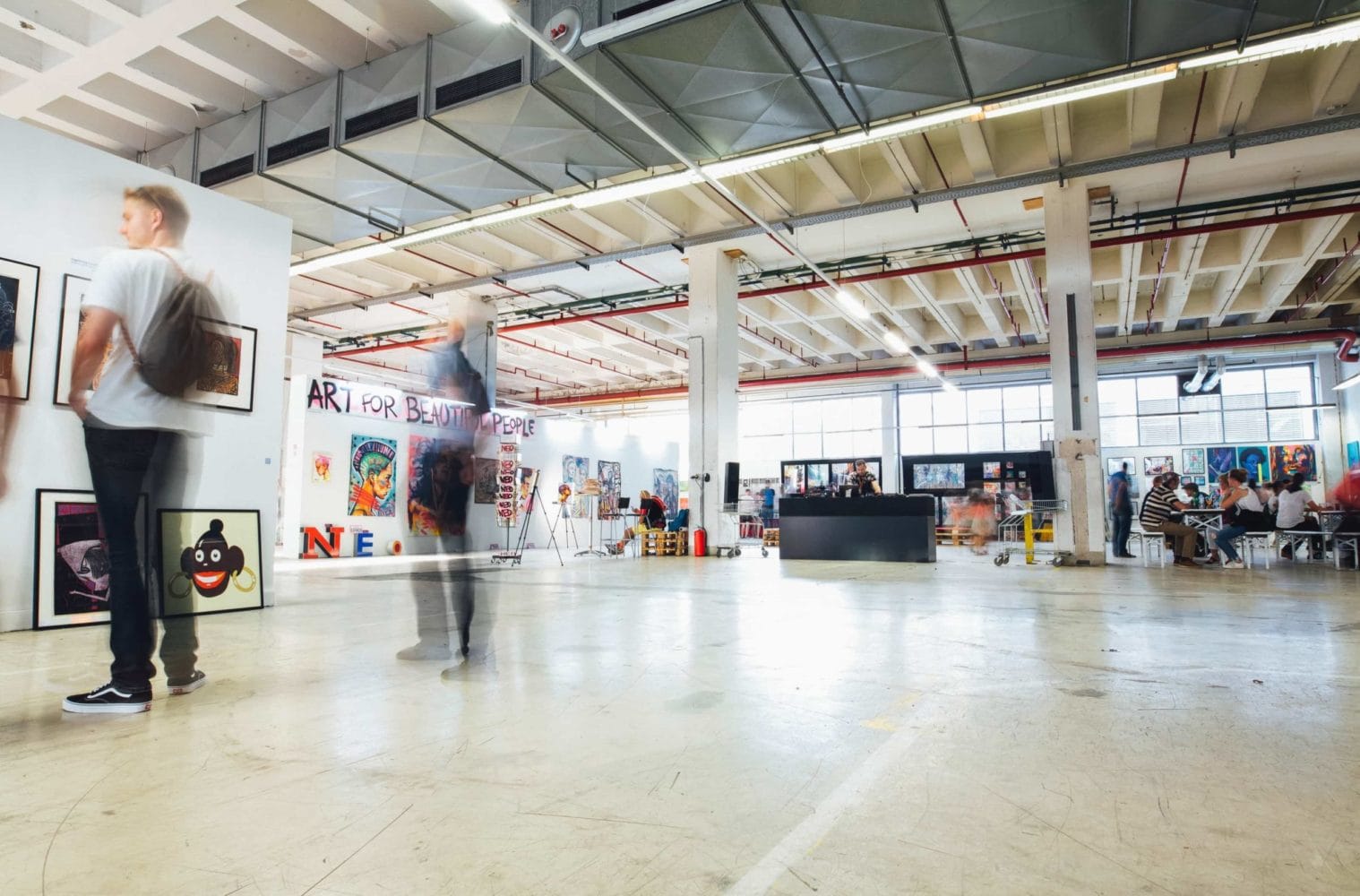The earliest dated depiction of a marijuana leaf – though endlessly debated – is thought to be in the form of a cave painting from the Neolithic Era (around 10,000-5,000 BC) in Kyushu, Japan. Whether it is indeed illustrative of a marijuana leaf, or may be a palm or aloe as some contest, humans have been creating images of veneration for cannabis in various forms throughout history. It has been one of the most versatile, important plants in the history of civilization, used and cultivated and revered for thousands of years. Throughout the 20th century however, the fraught relationship of modern societies and governments to the plant made it illegal, difficult to study, and unavailable to scientists and artists alike.
In more recent years, the legalization of marijuana in several US states, as well as the Canadian legalization nationwide in 2017 has led to a new genre of visual art: one centered on the beauty and spectacular detail of the cannabis plant. Images of marijuana have for a long time been somewhat dismissed by the high art world as belonging on cheap, stoner garb and black light posters. However, cannabis is now more visible than ever in popular culture, and as a result it is reaching the world of contemporary art.
In September of 2017, the Museum of Natural History at the University of Colorado, Boulder, created a show that would give museum-goers a very original exhibition: one that focused solely on the visual allure of cannabis. The Rocky Mountain Society of Botanical Artists hosted and curated Cannabis: A Visual Perspective, and challenged artists to take a serious approach to the cannabis plant, wishing to shuck the unrefined and perhaps immature depictions of weed leaves previously synonymous with it. The result was a collection of illustrations rendered in water colour, acrylic, oil, coloured pencil, pastel print, and mixed media. The exhibition was the first of its kind in the United States, and it drew worldwide attention for its detailed approach to the subject, which pushed typical cultural associations and uses aside to focus on the natural beauty of the plant.
That same year in Canada, an exhibition titled #Grassland was hosted by the Penticton Art Gallery in British Columbia. The country’s first-ever public-gallery art show focused on marijuana and included glassware, an emerging sculptural trend in the art world. While the #Grassland exhibition took place during the peak of excitement surrounding Canada’s legalization of marijuana, curator Paul Crawford had long wanted to explore the complicated nature of cannabis in the public sphere, citing “the tacit complicity everyone seemed to have towards the industry, including the RCMP.” This complex relationship of Canadian culture to pot became even more intriguing to Crawford when he found out that pipe-and-bong-maker Patrick “Redbeard” Vrolyk had won the 2015 Visual Artist Prize from the Penticton Arts Council.
In an interview with Canadian Art magazine, Crawford said “I was fascinated that our conservative town here would award a guy making bongs the artist-of-the-year award … It also made me look at something I’d never considered high art—just that piece of glass sitting on my friend’s coffee table. It was a fascinating thing to delve into that whole world.”
The glasswork of Vrolyk was included in the #Grassland show, while simultaneously in New York, the non-profit art space Apexart presented “Outlaw Glass”, bringing together glassware by 50 makers across North America. The show paid homage in particular to Bob Snodgrass, a maker of pipes and bongs who innovated certain techniques in the field, and shared them with other makers. Presented in mirrored display cases in a gallery setting, the functional objects read more as small-scale sculpture than as drug paraphernalia.
Cannabis has not only changed the art world visually, in one instance, it has given rise to cannabis as a whole new artistic medium. In 2018, Spanish graffiti artist Sea 162 created a mural using an ink he created from 70 grams of weed, 70 grams of hash and another extra 100 grams to produce canna-oil. The artwork, entitled “Cannabis Lupus” went viral for its groundbreaking use of cannabis as a material of creation rather than as a subject matter. Sea 162 calls this new method cannArt, which celebrates the relationship between marijuana and art, and utilizes the Earth’s natural environment as a source for both materials and inspiration.
The world has come a long way since you were in your best friend’s basement, looking up at his brother’s wall hang of a weed-leaf wearing sunglasses and tie-dye shorts, and so too has the art world. The cannabis plant is now a thing as worthy of careful, detailed depiction as any flower, and the tools of its use are now glittering in the same lighting as Picasso’s absinthe spoon. Respect for the cannabis plant continues to grow in a world coming full circle, returning to a place of acceptance and celebration for the gifts the plant bestows to our health, to our culture, and to our art. The endless metamorphosis of the art world is a perfect place for our ideas about cannabis to stew and develop and emerge as artistic works that continue to challenge and excite a population about political issue still in flux.
© Kanab Inc. – Kanab Inc. is a Toronto based cannabis retail company that honors the historical significance and uses of the cannabis plant across cultures and civilizations. Kanab has now opened its first cannabis dispensary at the intersection of Don Mills Road and York Mills Road in North York region of Toronto, Ontario (South of 401, West of 404 / Don Valley Parkway, and East of Leslie). For more info, please visit: kanab.ca






